Using sacred tools and treatment by touch, connection and cures through spirits in flight and ritual extraction of sickness, the traditional healers of central Australia explain their extraordinary skills and how they deal with contemporary issues and Western medicine.
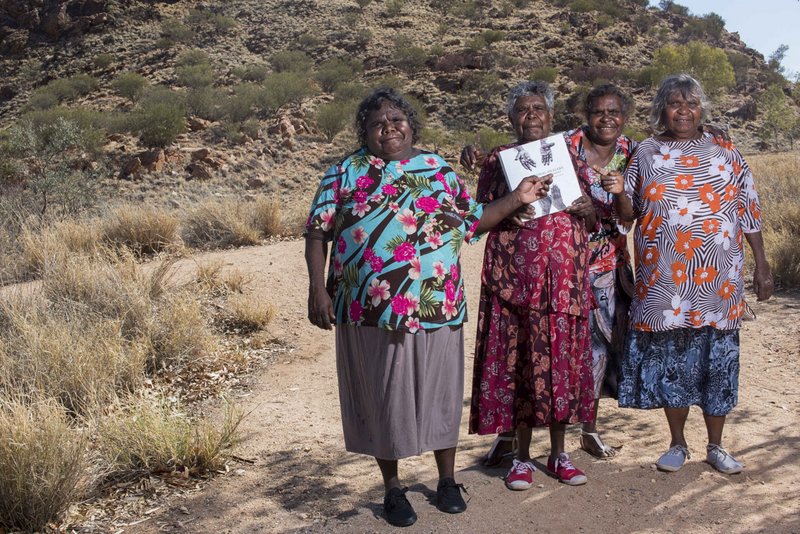

Super powers of central Australia’s traditional healers
By Ngaanyatjarra Pitjantjatjara Yankunytjatjara Women’s Council Aboriginal Corporation (NPY), Published in The Australian
The ngangkari are the traditional healers of the Ngaanyatjarra, Pitjantjatjara and Yankunytjatjara Lands, encompassing 350,000 square kilometres of the remote western desert. For thousands of years the ngangkari have nurtured the physical, emotional and social well-being of their people. To increase understanding and encourage collaboration with mainstream health services and the wider community, the ngangkari have forged a rare partnership with health professionals and practitioners of Western medicine. Experience the world of the ngangkari as they share their wisdom, natural healing techniques and cultural history through life stories, spectacular photography and artwork.
Ngangkari, Mural Story – NPY Women’s Council
NAOMI KANTJURINY
I was only a teenager when I received the gift, which initially scared me! This power just came to me alone. I’d wander around at night with my powers, and return to my camp early in the morning. All I could think was that I must have become a ngangkari [traditional healer] for some reason. I asked my mother, “Mother, why do I drift around at night so much?” and she replied, “You must be a ngangkari then.” My reaction was, “What?” and she said, “Yes, it seems that you have become a ngangkari all by yourself!”
We say wirunymankula waninyi – which means, to declare someone well and to banish the illness. The illness, or pain, can take the form of phlegm, or back pain, and this is what I specialise in. My work was as a healer, mostly helping women and children. Very often they didn’t need to tell me what was going on, because I’d know already. So I’d give the appropriate treatment and I know they were good. Women and children were healed by me countless times, especially children.
In Ernabella [mission, in far northwest South Australia], people would go and see the white doctors after they’d seen a ngangkari. They’d tell the doctor they’d seen a ngangkari already and the doctors encouraged this, because it made people stronger. The white nurses would be happy as well. The only difference was, they were on a salary and I was not. I would tell them that I didn’t get paid for my work. Ngangkari have always worked for free.
STORY: Aboriginal Dreamtime: The Rainbow Serpent
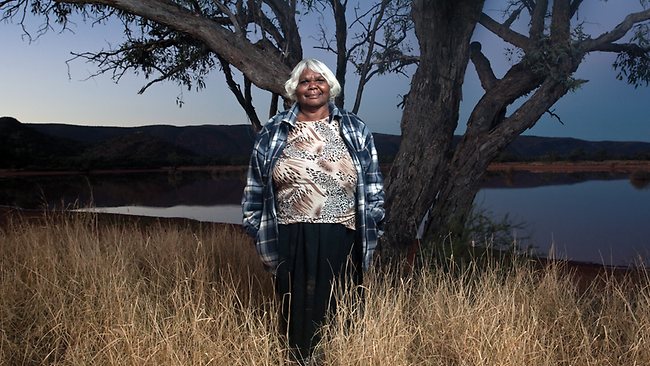

The touch of my hands has a healing effect. I give a firm, strong touch, and remove the pain and sickness, and throw it away from the sufferer. After their treatment they will stand up and tell me how they feel and, of course, there is always an improvement.
At night I see spirits. The kurunpa spirits talk to me. Spirits separate from the body when someone is unwell or suffering and I see them. This is how I find out they are not well. I have dog friends that help me, as well. These dogs are my friends. At night I travel around by myself to make sure the women are all right. I see everyone at night, how they are, if they are all right. Sometimes it scares me but it is my work, I have to do it. I travel alone and that is what I do.
Depressed people can feel a lot better within themselves after a ngangkari treatment. That’s one of our specialities. Their spirits are out-of-sorts, and not positioned correctly within their bodies. The ngangkari’s job is to reposition their spirits and to reinstate it to where it is happiest.
Some people ask me how I do the treatments that I do. I tell them that I have unique skills that are not easily explained, which I developed by myself. After a treatment, it is our task to ensure the sickness doesn’t return and pain doesn’t return. So we have to dispose of the pain in our special way. Ngangkari know how to do this. We have special powers in our hands. Our work is to mould the shape of the body so that it can accommodate the spirit properly. In that way, people are well. I ask people afterwards, “Are you feeling better now?” and they tell me, “Yes, I am feeling great!” Ngangkari touch people. We touch, and that is our special art and our skill.
STORY: Traditional Healing Among the Highland Maya
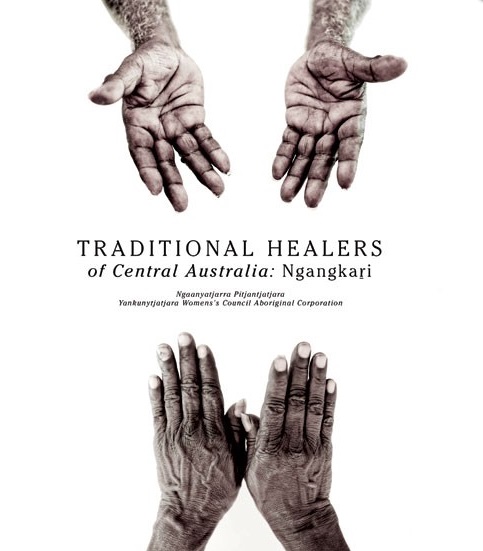

ANDY TJILARI
When I was growing up I had three grandfathers who were all ngangkari: my mother’s father, my father’s father and my grandfather’s brother. So I lived with these three ngangkari. Well, actually there were four, because my father was a ngangkari as well. One day my grandfather asked me, “Do you want us to give you ngangkari power, so that you can live your life as a ngangkari? You’ll have to help sick people, and heal them, whether they are men, women or children. If you do become a ngangkari, the power will stay with you all your life and you’ll never lose it, or be able to throw it away.”
My father was observing all of this. He told me that the way I would have to heal people would be to pull the sickness out of their bodies in the form of pieces of wood, or sticks, or stones, things like that. This is so that people can actually see with their own eyes the sickness that is removed from their bodies. This is the commonly accepted way we ngangkari do our work. It is so that people can see us taking their sickness away from their bodies, which gives them a sense of removal. My father told me I’d have to make sure I showed them what I took out, so they could see it, before I disposed of it.
I said to my father, “But how? How am I supposed to do that? I don’t understand how ngangkari work. How could I ever be able to do that?” He replied, “Don’t worry, we’ll show you. It won’t be hard once you know how.” So I was shown. I was given the power of a ngangkari by all my grandfathers, and I still have that power today. They taught me everything I know. They didn’t tell me how to do it. They showed me. They also placed inside me the sacred objects I would need to be my tools for working as a ngangkari. These are called mapanpa.
In the past, many children became ngangkari at a very early age. Children who took an interest in the healing arts often asked to be given power and to receive training. Often this training took place, as it did for me, at a distance from camp. The ngangkari would light fires at a separate camp and they would wait for the spirits to bring them special powerful tools. During the night, when they were all asleep, all the ngangkari people’s spirit bodies would start to rise up from their sleeping bodies and soar upwards. Now you know how people fly around in aeroplanes and drive around in cars? Well, for Anangu [people of the Western Desert], and for ngangkari, when they are asleep at night, their spirits move around in a similar kind of way. The ngangkaris’ spirit bodies begin to fly around and to visit the sleeping spirits of other people to make sure all is well.
STORY: Earth-Honoring Traditions of the Acjachemen with Spiritual Leader Adelia Sandoval
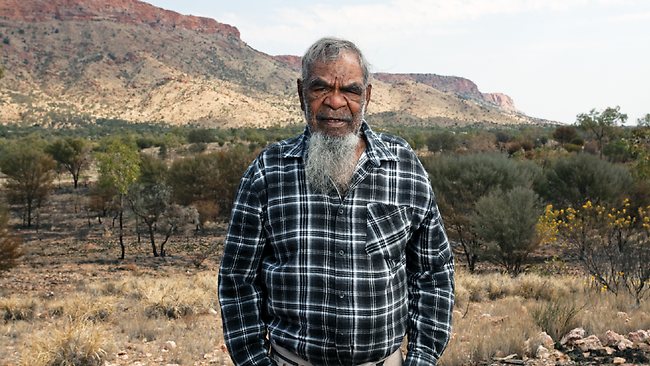

The spirit of a sick person is usually too sick to fly properly, and often crashes into trees. This is when the ngangkari’s night time work is very useful, because they will see the injured spirit holding onto the trunk of the tree, or fallen on the ground. The ngangkari will rescue the spirit. In doing so, he is able to recognise who it is and will say, “Oh, this is such-and-such. He is not well. Poor thing, he needs help here.” So he’ll pick up the spirit and take him to the body and ask the sleeping person to wake up. “Wake up. Your spirit is not well. Sit up and I’ll put you to rights.” The person will sit up, the ngangkari will replace the stricken spirit, and all will be well again very soon. By the next day, he will be quite better. This is a very special skill which we ngangkari alone have.
While all the ngangkari are gathered in the special camps, hundreds of mapanpa will come flying in. Mapanpa are special, powerful tools. They hit the ground with small explosions, “boom, boom, boom!” The ngangkari dash around collecting up the objects: kanti that look like sharp stone blades, kuuti that resemble black shiny round tektites, and tarka – slivers of bone. Each ngangkari gathers up the pieces he wants. These pieces become his own property.
I realise all this sounds very different to all you doctors and nurses who worked so hard at university to get where you are today. You have studied so many books. But we are working towards the same goal of healing sick people and making them feel better in themselves, as you are. In that way we are equal.
“We were born on this land, we birthed this land, our blood and the blood of our mothers and grandmothers is in this land. We are in this land and he land is in us. We will fight to keep this land for our grandchildren to grow up in!” — Mantatjara Wilson (dec) – 1980
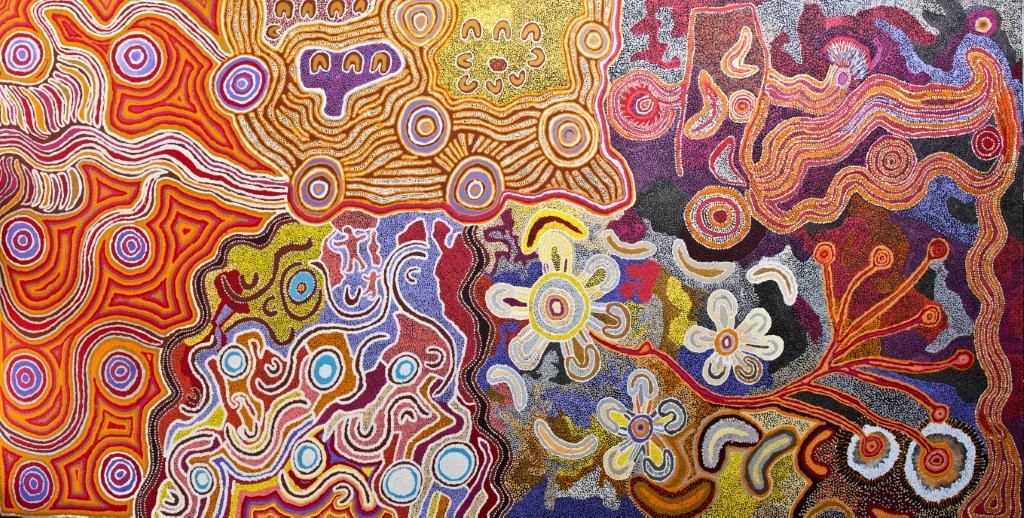

MARINGKA BURTON
My father had been a ngangkari his whole life, and his mapanpa had been given to him by his father. When he finally did give me the mapanpa, I became mara ala – meaning, my hands became open, my forehead became open, and I could see everything differently. I was able to travel into the skies with other ngangkari, soaring around in the sky, travelling great distances, and coming back home in time for breakfast. Ngangkari travel around in the sky, just our spirits travelling, while our bodies remain sleeping on earth. My father taught me that. He taught me everything, carefully and slowly.
We used to go for holidays a long way from the communities, and the white people used to follow us with the ration truck to give us our food ration in exchange for dingo scalps. All that flour and food! Sugar, sweet tinned milk, golden syrup and tins of meat. I know that a lot of our people are on dialysis now. It is from that sugar we ate back then. We all know this now. It is a shame because we have always had wonderful traditional bush foods. We had all the bush medicines that were used by everybody, it wasn’t part of the ngangkari’s specialised work. We used the bark on the roots of the wakalpuka bush for a splint if a child broke their leg or arm. We’d put the skin of the nest of the itchy caterpillar onto burns and itchy sores; you take the nest and remove all of the droppings from the inside of the nest and wash it and then you put it on the skin. It was a fantastically good treatment for burns, rather like doing a skin graft! If somebody scratched and itched, we’d put it on that as well.
My mapanpa live in my body. I am a painter, and when I paint, my mapanpa move right up into my shoulder and sit up there, out of the way. If somebody comes to me, needing help, I would have to ease my mapanpa back into my hands again. Sometimes I would push them from one arm to the other. When I am giving a healing treatment, I push with my left hand and I extract with my right.
I work on the head a lot and I heal people if they’ve got a headache. If there is something serious like a car accident and we are called to attend, we go straight there without delay. People have been hurt and the terrible shock of an accident shakes the kurunpa [spirit] out of a person and so we go there to find the kurunpa and we bring it back and replace it. Without the spirit any bodily healing takes much longer. Afterwards we attend the clinics, and when they call us, we do our work courageously without fear.
In the past non-Aboriginal doctors would do their work, yet they didn’t know about us traditional healers. Our traditional healers were always busy healing people at home, looking after the entire community, while the doctors did their work in their clinics. But neither knew how the other one worked. We are unable to do too much work with renal patients; we never touch their kidneys, they are too vulnerable. But we do help with pain and discomfort.
Dealing with the deceased, sometimes we can capture the spirit of the deceased and place it into the living spouse, which is a really caring and strengthening thing to do. Sometimes if a son passes away, and the mother is really sick and bereaved, the dead son’s spirit is placed inside the mother. In that way everybody is happier and it ensures that they get back to their normal health more quickly and are happier and healthier during their time of grief, because it is really terrible if somebody is too sad for too long.
Sometimes I can call a spirit with a branch. Using the branch I can usher it along, into the burial place, where the spirit should be. Sometimes the spirit will leave the body and leave the burial ceremony and travel around and make people sick. Sometimes, if I see that, I use a branch to brush it along, to brush it along so it goes back to the cemetery.
See here on my elbow? That’s where my mapanpa sits. I’ve got openings in my hand and an opening in the forehead. We say that ngangkari people are mara ala and ngalya ala, which means open hands and open mind. When you hear someone say, “Oh, he’s mara ala,” that just tells you instantly that she’s a healer, a traditional healer, a ngangkari.
Traditional Healers of Central Australia: Ngangkari (NPY Women’s Council) is out now, $49.95.
Updated 23 February 2021

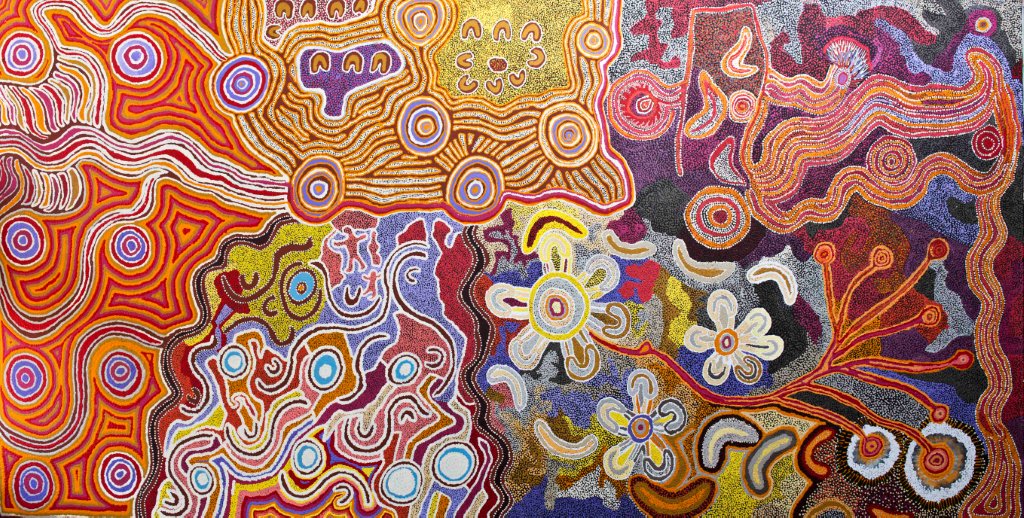








I first remember my 3 sisters visiting me in a dream when I was 10 years. I ask dad if we had a black women in our family that skin faded to white then their dust a tiny galaxy would dance up into the sunlight. I didn’t those women where 3 of our sisters.
My mother was kind and all the children wanted her to be their mum and they wait above with angels to be born.
When I was a teenager my daughters and all started to closing this gap cause they remember more then me but it triggered a floods of knowledge and our nugunkari powers too. The dogs are our pack animal we are kin iv know that since I was 16 and a gave birth 🙂 my daughters and I call out to our pack across the night sky.
After starting to read this healing book I started woke out what these gifts where. I used to be Christian with my whole heart now I practise and celebrate the oldest religion on earth the Australian Aboriginal Faith & creation. I bless The earth and river around me and between grandmother morning, the rainbow serpent and our family in the stars I finally know what religious belief I have always truly believed In. One that was about protecting children not killing a man’s only son, for any true parent would take the cross in place of their children.
As started to ask country before taking for the trees or sea or earth I was being blessed and giving back to to country was more important to me then wat I could get from her.
I have aboriginal on at least 3 sides that I know off and I am a eora women from the inner west of Sydney which sacred women birthing ground saddly cook the crook killed our beloved queen and their a massacre sites around petersham where I now live. My mum and my daughters have all sadly been a victims of stolen generations all from This same sacred country it kills me that we haven’t stop them taking our babies but I believe if we work together again we can beat this current child removal mob.
It’s hard to practise healing when my lines being purposely keeped apart.
I cry for every single baby that’s been taken like it’s my own because they are all my babies and they belong to us not them.
Since I started learning from This book I have healed blindness over a vast distance, lifted the body of a child to be found from SA, healed my daughters son his death bed – that’s her spiritual son not biological, cured infertility- continued my healing works for HIV patients- headings for terminal cancer patients- healed other sick children- healed animals-protected children with song n dance with our rainbow separate.
So much for someone that grew with whites with no culture at all except a love to the bush sea and animals and pride for this beautiful Australia we share.
I hate corruption I hate mining I hate logging and I hate our current waste water system And am desperate to go back to our incinerator systems like pre cook the crook
I look forward to learning from sisters n aunty’s and of course the children of Australia they know wat we forget
“with my whole heart now I practise and celebrate the oldest religion on earth the Australian Aboriginal Faith & creation. I bless The earth and river around me and between grandmother morning, the rainbow serpent and our family in the stars ”
Melissa, this is beautiful. Thank you. I wish for your dreams too, & for all Australians to be proud of, and thankful for your culture. I think it is coming.
I need to make contact with the aboriginal Australian medicine men and women
Pingback: Ecological Amnesia: Life Without Wild Things | WilderUtopia.com
Hi Ngangkari womens.
My 4 year old grand-daughter born with problems to her legs which she cannot stand on them nor can she walk. She seem to have no power to use her legs. How would there be a possibility of maybe she has a bad spirit which may be out of line for her good spirits?
Cheers
Thomas
Pingback: Dark Omen: Climate Chaos Converges with Solar Eclipse Wisdom
Pingback: Walkabout: Following Songlines Beyond the Western Frame
Pingback: Aboriginal Dreamtime: The Rainbow Serpent Myth - WilderUtopia